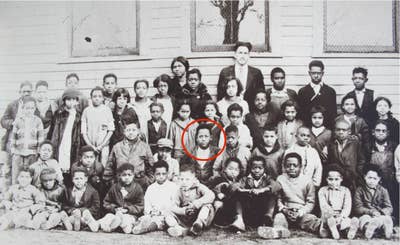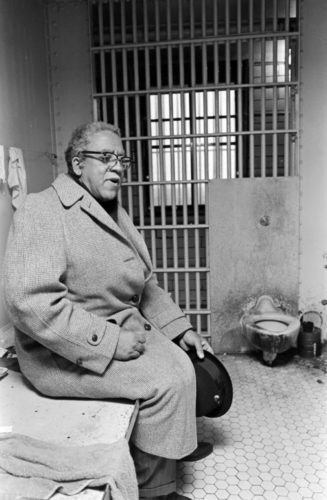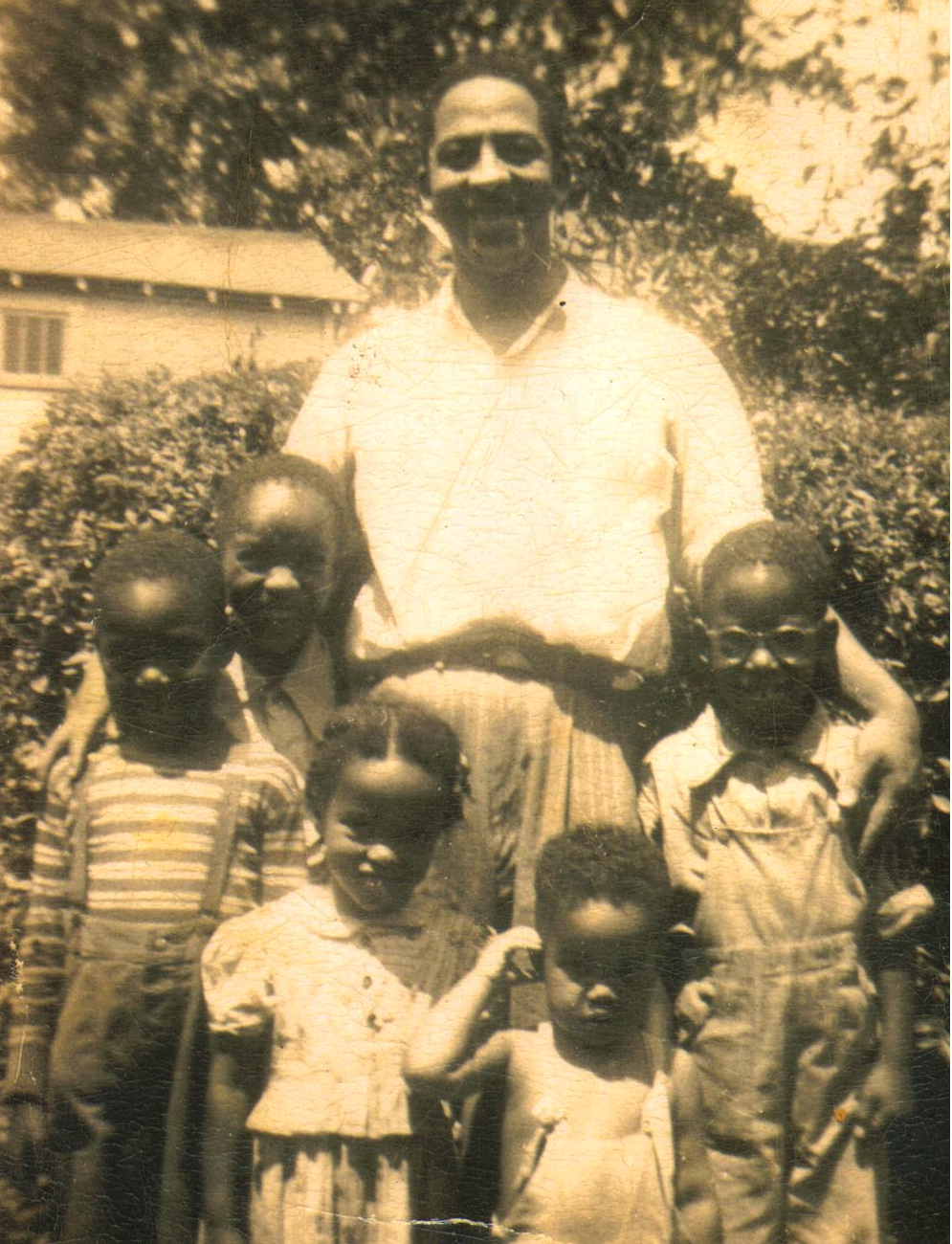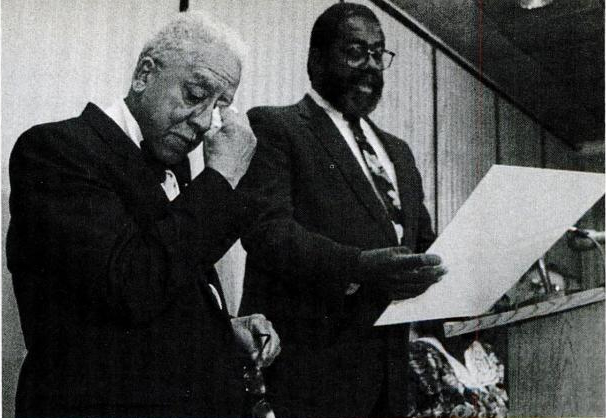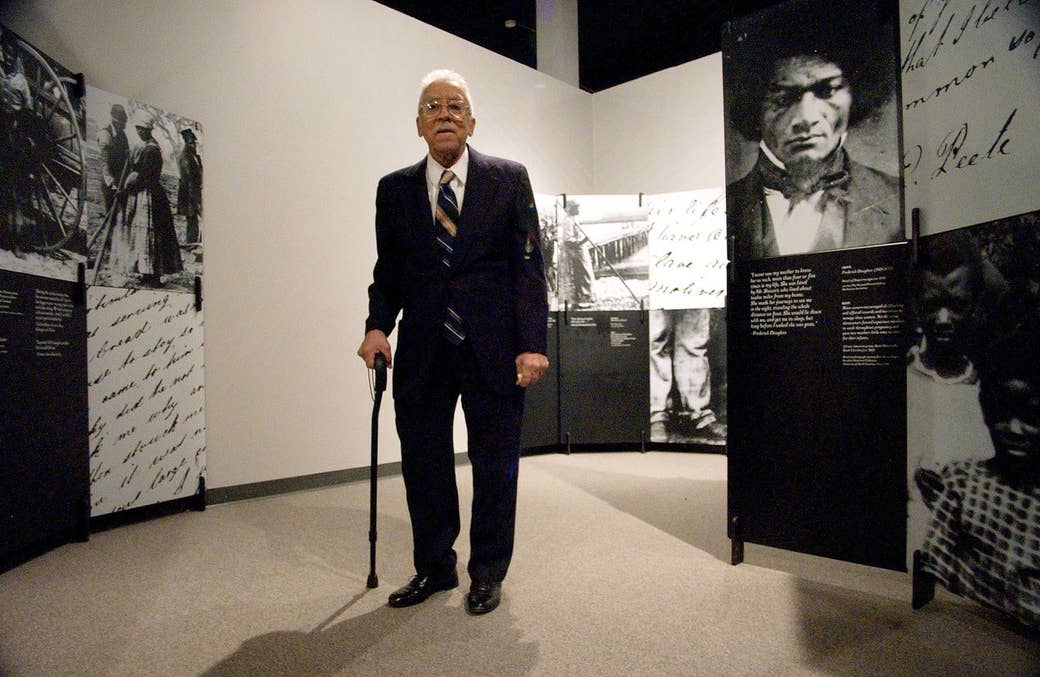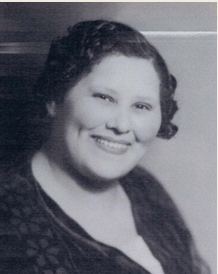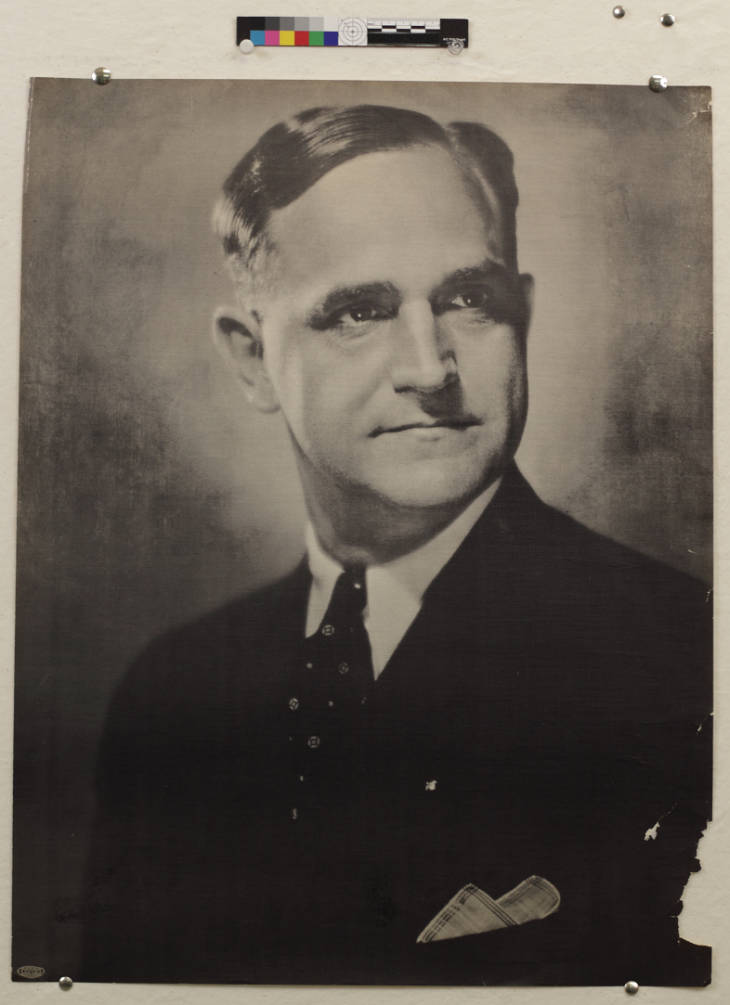
Sherman Minton’s willingness to find flexibility in the law and his own thinking helped end state-sanctioned discrimination toward African Americans in housing, employment, and education. Considering his rigid stance on judicial restraint, Minton’s reformist civil rights record is surprising at first glance. He believed that Congress, not the courts, should define the country’s laws. As an Associate Justice of the U.S. Supreme Court from 1949-1956, Minton invariably deferred to both congressional and judicial precedent, opposing activism by the Court. A closer look at his role in several landmark desegregation cases shows how Minton was able to stretch precedent in order to bend the moral arc of the universe toward justice. His much-lauded judicial opinion on Barrows v. Jackson, the Supreme Court decision that ended discriminatory housing covenants, is particularly relevant. Today, much work remains to fully end discriminatory policies that create disparity in income and living conditions for millions of Black Americans, a sort of de facto segregation that lingers more than sixty years after these Civil Rights Era desegregation cases. The civil rights work of Sherman Minton is worth considering here, if for no other reason, because it remains unfinished.
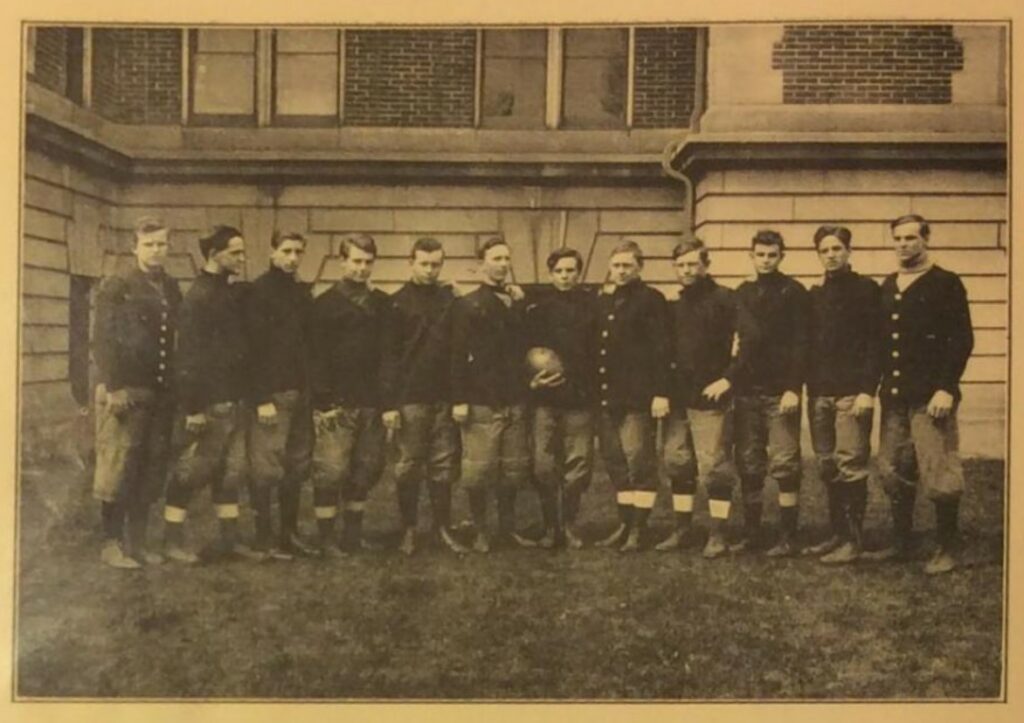
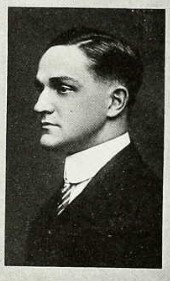
Young Minton, better known as “Shay,” was a troublemaker. Born in Georgetown, Indiana, in 1890, he had to work from a young age to help support his struggling family. Yet, he somehow still found the energy to knock neighbors hats off with snowballs or loosen a wheel on his brother’s wagon, causing it to fall off and ruin his date. While Minton may have been rambunctious in his spare time, he was a serious student with a love of learning. He graduated from New Albany High School in 1910 and worked a series of jobs before enrolling at Indiana University in 1911.[1]
At IU, Minton excelled in football, baseball, and debate. He took two years of undergraduate classes before entering the IU School of Law, graduating with a Bachelor of Laws in 1915.[2] He then won a scholarship to Yale University School of Law where he earned his Master of Laws degree in 1916.[3] While at Yale, Minton came under the tutelage of former President William Howard Taft, who himself would go on to serve as a Supreme Court justice (the only president to boast this accomplishment). Reportedly, after Shay argued with Taft over a lesson about a certain Supreme Court ruling, Taft told his student:
I’m afraid, Mr. Minton, that if you don’t like the way this law has been interpreted, you will have to get on the Supreme Court and change it.[4]
Minton would later take the former president up on this suggestion.
Upon graduation from Yale, Minton set up a law practice in New Albany. Soon after, the United States entered WWI and Minton immediately enlisted in the U.S. Army. He was commissioned as an infantry officer, trained at Fort Benjamin Harrison, and sent overseas in July of 1918 where he served on the French front.[5]
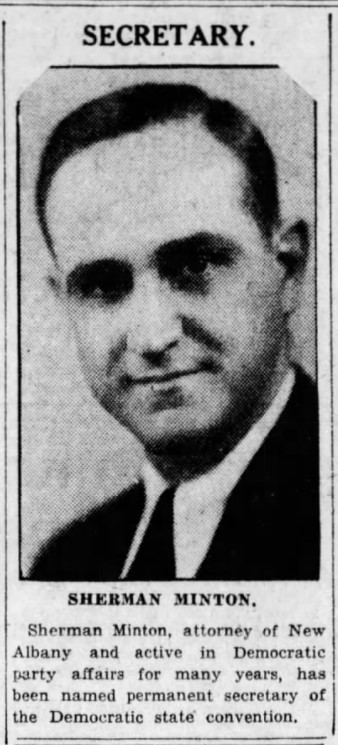
After returning from war, Minton entered the Democratic primary to seek a congressional Senate seat. While he was unsuccessful in this 1920 election, he would remain active or interested in Democratic Party politics his entire life.[6] For the following decade, he practiced law before making another unsuccessful bid for the U.S. Senate in 1930.[7] During the 1930s, he became even more politically active, campaigning for Paul McNutt in the 1932 gubernatorial race.[8] After McNutt was elected, the new governor rewarded Minton with his first public office, appointing him public counselor to the Public Service Commission. Minton began his work March 8, 1933, representing the public against utilities companies, and securing rate reductions in hundreds of cases.[9]
In 1934, Minton again ran for Congress on a platform of staunch support for President Franklin Delano Roosevelt and the New Deal. That November 6th, Indiana voters finally sent Minton to Washington.[10] He took his seat in the U.S. Senate next to future President Harry Truman in January 1935.

Minton would serve only one term in Congress, but the experience influenced his later judicial positions. As a member of a committee that investigated utility companies, he helped break up monopolies, work he would later continue from the bench. He was a vocal critic of the Supreme Court decisions that declared several New Deal policies unconstitutional, establishing his long-held view that the Court shouldn’t overturn the will of the people as expressed through their elected officials. And he became a spokesman for the administration, explaining complicated issues (like Roosevelt’s court packing plan) in plain language, a strength he would later bring to his written judicial opinions.[11]
When it came to increasing or strengthening the rights of African Americans, he was swayed neither by the administration nor legislative precedent. Instead, Minton took a moral stand for civil rights. For example, he broke with the administration’s lack of action against lynching by advocating for anti-lynching legislation throughout his term.[12] When opponents to a 1938 anti-lynching bill claimed that the states should regulate lynching, not Congress, Minton noted that there had been eight lynchings the previous year and none were prosecuted. “In other words,” Minton told his fellow senators, “there was 100 percent failure to prosecute the most heinous crime.”[13] He finished with a moral argument for legislative interference to stop lynching, stating:
I am interested in State rights, but I am much more interested in human rights.[14]
Minton was again nominated for his Senate seat in 1940, but lost as the Republican Party swept the Indiana elections. Recognizing his service to the Democratic Party and the administration, in January 1941, President Roosevelt made Minton his administrative assistant. Soon a position on the Seventh Circuit Court of Appeals, a busy federal court located in Chicago, opened, and FDR nominated Minton for this prestigious judgeship. On May 7, 1941, the Senate confirmed the nomination and that October Minton joined the Seventh Circuit bench. [15]
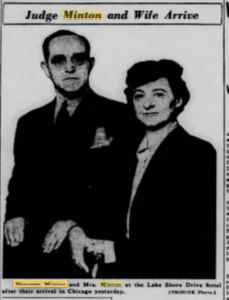
The Seventh Circuit Court of Appeals heard a large number of cases and Minton wrote his share of opinions and dissents in his eight years on the bench in Chicago. Yet, even drawing on this large sample of cases, it can be difficult to understand his judicial philosophy. He seems full of contradictions at times.
An ardent New Dealer, Minton believed the government was responsible for improving the lives of its citizens, which included protecting consumers. Thus, Minton often decided against corporations engaging in monopolistic practices and usually decided for the rights of labor unions. However, it was the greater good of the majority of citizens that moved Minton, not necessarily the rights of individuals. Thus, he often decided in favor of government agencies at the expense of individual rights. This was especially true when the decision could potentially impact national security. Perhaps this is not surprising considering for much of his time on the Seventh Circuit bench, the world was at war and many in the United States feared both foreign and domestic enemy agents.[16]

Minton was dedicated to judicial restraint and upholding legislative intent – two sides of the same coin. In other words, Minton believed that the courts should not overturn congressional legislation which was the will of the people made law. This dovetails with his interest in protecting the rights of the majority. By deferring to Congress, Minton believed he was deferring to the people of the United States who elected the congressmen. But in cases of individual freedoms, his position sometimes put him out of step with his colleagues who saw an opportunity to expand civil liberties through their decisions. Minton was not opposed to increased civil liberties, he just believed that such issues were under the purview of Congress, not the courts. He would adhere to this view as he ascended to the nation’s highest court.[17]
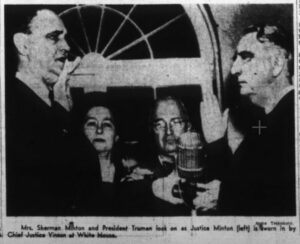
In September 1949, President Harry Truman nominated Sherman Minton, his old friend from their years in the Senate, for the Supreme Court of the United States. Minton was confirmed and took his place on the bench that October.[18] As an Associate Justice of the Supreme Court, Minton maintained his general position of restraint, tendency to side with legislative precedent and the administration against individuals, and his disinclination to overturn the rulings of state courts. Despite this determination, Minton maintained a consistently strong, activist position when it came to civil rights issues, especially desegregation, as evidenced by landmark cases such as McLaurin v. Oklahoma State Regents, Sweatt v. Painter, Brown v. Board of Education, and Barrows v. Jackson.

On June 5, 1950, the Supreme Court decided both McLaurin v. Oklahoma State Regents and Sweatt v. Painter. These cases overturned the “separate but equal” precedent of Plessy v. Ferguson with the Court unanimously deciding that, at the level of graduate school and law school, segregation denied Black students equal educational opportunities, violating their Fourteenth Amendment rights to “equal protection of the laws.”[19] Referring to the separate areas where a Black student was forced to eat and study, Chief Justice Fred Vinson wrote in the Court opinion:
Such restrictions impair and inhibit his ability to study, to engage in discussions and exchange views with other students, and, in general, to learn his profession . . . State imposed restrictions which produce such inequalities cannot be sustained.[20]

These cases provided precedent for the Court’s decision in Brown v. Board of Education of Topeka in 1954. In this historic case, the Court determined that, like the earlier cases dealing with higher education, segregation in public schools also violated the Fourteenth Amendment. In short, the justices determined that there was no such thing as “separate but equal” education. In his opinion, Chief Justice Earl Warren wrote:
We conclude that in the field of public education the doctrine of “separate but equal” has no place. Separate educational facilities are inherently unequal.[21]

Chief Justice Warren felt that an unanimous decision was essential in Brown in order to convey to the public that the Court was taking a moral as well as a constitutional stand against segregation and that the issue was now decided unequivocally. Imparting that moral argument in the opinion for Brown, Justice Warren wrote:
To separate them from others of similar age and qualifications solely because of their race generates a feeling of inferiority as to their status in the community that may affect their hearts and minds in a way unlikely ever to be undone.[22]
Legal historians Linda Gugin and James St. Clair argued that Sherman Minton played a vital role in making these decisions unanimous. The scholars called him “the Court’s strongest team player” because of the warm personal relationships he fostered with his colleagues.[23] Minton was reportedly the only justice welcome in every one of their offices. He regularly organized group lunches and made sure to express his respect for his fellow justices when he dissented from their opinions. It was, therefore, quite possible that Minton was able to convey the importance of a united front on the Brown decision to his undecided colleagues.

Because the opinions in the aforementioned cases were written by the Chief Justice (Vinson for the 1950 cases and Warren in 1954), it is impossible to definitively analyze Minton’s impact on the decisions. However, in the 1953 case of Barrows v. Jackson, Minton penned the Court’s opinion, allowing us a rare opportunity to dissect his thinking and interpret his own views on segregation and civil rights. To summarize the complicated case of Barrows v. Jackson briefly, the white neighbors of Los Angeles resident Leola Jackson were suing her for damages after she sold her house to African American buyers. This sale violated the neighborhood’s “restrictive property covenant,” a clause forbidding the sale of property in the neighborhood to non-white buyers.[24]
In the 1948 case Shelley v. Kraemer, the Supreme Court had ruled that while private discrimination was not unconstitutional, state courts could not enforce restrictive covenants because this would constitute state action in discrimination. Such state involvement would violate the State Action Clause of the Fourteenth Amendment which affirms that “a state cannot make or enforce any law that abridges the privileges or immunities of any citizen.” In other words, white people were free to discriminate against African Americans by refusing to sell them homes in segregated neighborhoods, but the courts could not enforce such segregation or it would be the state itself that was discriminating against African Americans, which was unconstitutional.[25]
White supporters of segregated neighborhoods quickly identified a weakness to exploit in the Shelley decision – the issue of damages. Was it legal for white home owners to sue for damages when their restrictive covenants were violated? If so, this blatant attempt to intimidate white sellers into not selling to Black buyers would make the spirit of Shelley, which was intended to end covenants, null and unenforceable. The Barrows v. Jackson case would decide if state-sanctioned segregated neighborhoods could continue.[26]
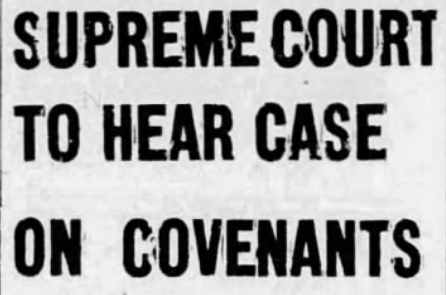
Minton’s decision in Barrows v. Jackson drew on this idea of state action as defined in Shelley and expanded it to finally end restrictive covenants for good. This required an advanced understanding of the technical aspects involved in the case, as well as a morally-based desire to end injustice in housing for African Americans. In order to end the unjust covenant practice, Minton had to engage in some complex legal maneuvering and creative use of precedent.
The first issue Minton addressed in his majority opinion in Barrows v. Jackson was a relatively straightforward application of the “state action” determination in the Shelley decision. He argued that if the state were to award damages to Jackson’s neighbors for her violation of the covenant, this would constitute “state action.” This would then violate the Fourteenth Amendment State Action Clause.[27]
The major legal challenge Minton resolved with his opinion, was that of the petitioners’ attempt to circumvent Shelley altogether. The white petitioners were not suing the Black buyers for damages, which would have made the discrimination obvious. They were suing the white seller. This was a carefully chosen legal strategy. Traditionally, the Court would not hear cases where the party being impacted, in this case discriminated against, was not present. The attorneys for the neighbors hoped that the case would be dismissed because the rights being violated were that of a third party (the Black buyers), who were not present in the courtroom. Here, Minton flipped the question. He asked the Barrows’ attorneys, “whose constitutional rights would be violated if California failed to award contract damages to the petitioners?” They had to reply “that no one’s rights would be violated.” So, where then was the damage? The petitioners would have to bring the racial issue into the courtroom if they were claiming some damage had been done in selling to a Black buyer.[28]
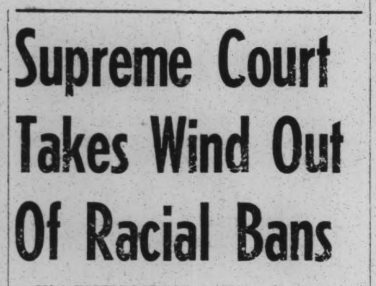
Minton extended the Shelley decision to cover the missing third party issue by explaining that Jackson had a right to protect herself against the “coercion” of the petitioner. In short, the Shelley decision was intended to stop discrimination against African American buyers. If Jackson had to pay damages for violating the discriminatory covenant that Shelley had intended to invalidate then she would, in fact, be paying for failing to discriminate – a direct contradiction of the intent of Shelley. He determined that the interests of Jackson and the Black buyers were closely enough aligned that Jackson represented the buyers. Thus there was no missing third party and racial discrimination was the inherent issue.[29]
Minton had little tolerance for the petitioners’ blatant attempt to circumvent the Shelley decision through such lawsuits aimed at technicalities. And he had no tolerance for continued discrimination against African Americans. He summed up his thinking eloquently and passionately in his written opinion:
The relation between the coercion exerted on respondent [Jackson] and her possible pecuniary loss thereby is so close to the purpose of the restrictive covenant to violate the constitutional rights of those discriminated against, that respondent is the only effective adversary of the unworthy covenant in its last stand. She will be permitted to protect herself and, by so doing, close the gap to the use of this covenant, so universally condemned by the courts.[30]
Minton and his clerks cited several other cases, notably Pierce v. Society of Sisters, and wrote careful clauses further defining the third party issue. [See complete legal analysis here]. In summary, Minton closed the last loophole allowing restrictive covenants and state-sanctioned segregation. Legal scholars Gugin and St. Clair summarized the final decision thusly:
The court moved to make restrictive covenants virtually unenforceable in state courts by ruling that state courts cannot award damages when a restrictive covenant is violated because it is tantamount to the state itself discriminating on the basis of race, which it may not do under the Fourteenth Amendment.[31]


Minton’s arguments as forwarded in his written opinion in Barrows v. Jackson may stand as his finest judicial moment. Gugin and St. Clair called it “Minton’s most memorable opinion” and noted that “he was praised in law review articles for his imaginative approach.”[32] In fact, the Barrows decision has been classed among the most important desegregation events of the Civil Rights Era. Although Barrows determined that the state would not discriminate, de facto segregation continued.

In fact, neighborhoods remain segregated to this day. The real estate opportunities afforded white Americans and denied Black Americans in the 1950s helped widen the economic disparity between races. “White flight” from cities and government subsidies for suburbs have created new segregated neighborhoods. Zoning, housing codes, gentrification, and low-income housing areas have further separated economic classes, divided along racial lines. Recently, the Covid-19 pandemic further highlighted this disparity. More than twice as many Black Americans died as a result of “the inequitable living conditions, work circumstances, underlying conditions, and lower access to health care that characterize segregated neighborhoods.” According to the Brookings Institute:
Public policy and industry practice have produced a separate and unequal landscape of American neighborhoods, propagating multigenerational negative impacts on health, social mobility, and wealth for people of color as well as harmful divisions in our economy and society.[33]
As the Supreme Court decided in the desegregation cases when Minton sat on the bench in the 1950s, there is no such thing as separate but equal. The work for equal rights for Black Americans and the perfection of the promises made in the United States Constitution continues.
Notes
[1] 1900 United States Federal Census, Georgetown Township, Floyd County, Indiana, page 8, line 36, Enumeration District: 0054; FHL microfilm: 1240371, Washington, D.C.: National Archives and Records Administration, accessed AncestryLibrary.com.; “Twenty Pupils Suspended,” Plymouth Tribune, February 25, 1909, 4, accessed Hoosier State Chronicles.; Linda C. Gugin and James E. St. Clair, Sherman Minton: New Deal Senator, Cold War Justice (Indianapolis: Indiana Historical Society, 1997), 38-44.
[2] “Indiana University Debaters Who Will Meet Illinois and Ohio Orators in Annual Contest,” Indianapolis News, March 13, 1913, 4, accessed Newspapers.com.; “Minton, Star Half Appears on Field,” South Bend Tribune, November 19, 1913, 12, accessed Newspapers.com.; “Bryan Prize is Awarded,” Indianapolis Star, April 9, 1914, 18, accessed Newspapers.com.; “Lineup for Sunday’s Game,” Bloomington Evening World, April 23, 1915, 1, Newspapers.com.; “Medic and Law Graduate List,” Bloomington Evening World, May 28, 1915, 5, accessed Newspapers.com.
[3] “News of the Colleges,” Indianapolis News, September 29, 1915, 12, accessed Newspapers.com.; “Minton Enters Yale,” Bloomington Evening World, September 29, 1915, 1, accessed Newspapers.com.; 1920 Alumni Directory of Yale University (New Haven: Yale University, 1920), 541, accessed HathiTrust.
[4] Gugin and St. Clair, 52.
[5] Sherman Minton Draft Registration Card, June 1, 1917, Floyd County, Indiana, Form 522, No. 46, U.S. World War I Draft Registration Cards, 1917-1918, accessed AncestryLibrary.com.; “In Second Training Camp,” Indianapolis News, August 14, 1917, 3, accessed Hoosier State Chronicles.; U.S. Army, Passenger List of Organizations and Casuals Returning to the United States, July 7, 1919, Records of the Office of the Quartermaster General, 1774-1985; National Archives at College Park, Record Group 92, Roll or Box 125, U.S., Army Transport Service Arriving and Departing Passenger Lists, 1910-1939, accessed AncestryLibrary.com.
[6] “Soldier Announces His Candidacy for Congress,” Jasper Herald, December 5, 1919, 1, accessed Newspapers.com.; “J. W. Ewing Wins Third District Nomination,” Richmond Palladium and Sun-Telegram, May 8, 1920, 10, accessed Newspapers.com.
[7] “Democrats to Open Campaign Sept. 18,” Seymour Daily Tribune, September 13, 1914, 1, accessed Newspapers.com.; “Democratic Speakings Announced for County,” Brownstown Banner, September 17, 1924, 1, accessed Newspapers.com.; “Sherman Minton Has Brilliant Record,” Jeffersonville Evening News, reprinted Jasper Herald, January 24, 1930, 4, accessed Newspapers.com; Sherman Minton, “To The Voters of Dubois Co,” Jasper Herald, May 16, 1930, 4, accessed Newspapers.com.; “Democrats in Jasper Rally,” Bedford Daily Mail, October 15, 1930, 1, accessed Newspapers.com.
[8] “Meeting Shows M’Nutt Backing,” Indianapolis Star, February 8, 1932, 1, accessed Newspapers.com.; “McNutt Meeting Set for Tonight,” Boonville Enquirer, April 29, 1932, 1, accessed Newspapers.com.
[9] Ralph L. Brooks, “State’s Commerce-Industry Division Affects All Citizens,” Indianapolis Sunday Star, September 17, 1933, 57, accessed Newspapers.com.
[10] “Republicans Sweep City, County; Minton Beats Robinson in Race for Senate Seat,” Lafayette Journal and Courier, November 7, 1934, 1, accessed Newspapers.com.; “Minton Leads Lake Ticket,” Hammond Times, November 8, 1934, 1, accessed Newspapers.com.; “Minton Winner,” Boonville Enquirer, November 9, 1934, 1, accessed Newspapers.com.
[11] Gugin and St. Clair, Chapter Four: “Fulfilling His New Deal Promise.”
[12] “Senators Agree on One Point,” Muncie Evening Press,” August 6, 1937, 22, accessed Newspapers.com.; “May Use Anti-Lynch Bill in Filibuster,” Baltimore Sun, November 25, 1940, 7, accessed Newspapers.com.
[13] Congressional Record, 75th Congress, 3rd Session, 1938, vol. 83:2. 1931-45, cited in Gugin and St. Clair, 115.
[14] Ibid.
[15] “Sherman Minton Is Named to Circuit Court of Appeals,” Muncie Evening Press, May 7, 1941, 1, accessed Newspapers.com.; “Minton Sworn In as U.S. Judge,” Indianapolis Star, May 31, 1941, 11, accessed Newspapers.com.; “Induction Today,” Chicago Tribune, October 7, 1941, 3, accessed Newspapers.com.; “Minton Becomes U.S. Judge, Says Good-by, Politics,” Chicago Tribune, October 8, 1941, 3, accessed Newspapers.com.
[16] Gugin and St. Clair, Chapter Seven: “A Faithful Disciple of Judicial Restraint.”
[17] Ibid.
[18] “Names Minton to High Court,” Terre Haute Tribune, September 15, 1949, 1, accessed Newspapers.com.; “Minton Is Confirmed for Court, 48 to 16,” New York Times, October 5, 1949, 1, accessed timesmachine.nytimes.com.; “Hoosier Sworn In As Supreme Court Justice,” Muncie Evening Press, October 12, 1949, 1, accessed Newspapers.com.; “Minton Sworn In As Supreme Court Justice,” New York Times, October 13, 1949, 18, accessed timesmachine.nytimes.com.
[19] Supreme Court of the United States, McLaurin v. Oklahoma State Regents for Higher Education et al., Decided June 5, 1950, 339 U.S. 637, Legal Information Institute.; Supreme Court of the United States, Sweatt v. Painter et al., Decided June 5, 1950, 339 U.S. 629, Legal Information Institute, Cornell Law School.
[20] Supreme Court, McLaurin v. Oklahoma State.
[21] Supreme Court of the United States, Brown et al. v. Board of Education of Topeka et al., Decided May 17, 1954, 347 U.S. 483, Legal Information Institute, Cornell Law School.
[22] Ibid.
[23] Gugin and St. Clair, 263.
[24] Supreme Court of the United States, Barrows et al. v. Jackson, Decided June 15, 1953, 346 U.S. 249, Legal Information Institute, Cornell Law School.
[25] Supreme Court of the United States, Shelley et ux. v. Kraemer et ux. McGhee et ux. v. Sipes et al., Decided May 3, 1948, 334 U.S. 1, Legal Information Institute, Cornell Law School.
[26] David N. Atkinson, “Justice Sherman Minton and the Protection of Minority Rights,” Washington and Lee Law Review 34, iss. 1 (1997): 97-117, accessed Washington and Lee University School of Law Scholarly Commons.
[27] Supreme Court, Barrows et al. v. Jackson.
[28] Ibid.; Atkinson, 109.
[29] Ibid.
[30] Supreme Court, Barrows et al. v. Jackson.
[31] Gugin and St. Clair, 248.
[32] Ibid., 248-49.
[33] Tracy Hadden Loh, Christopher Coes, and Becca Buthe, “The Great Real Estate Reset,” December 16, 2020, Brookings Institute.




